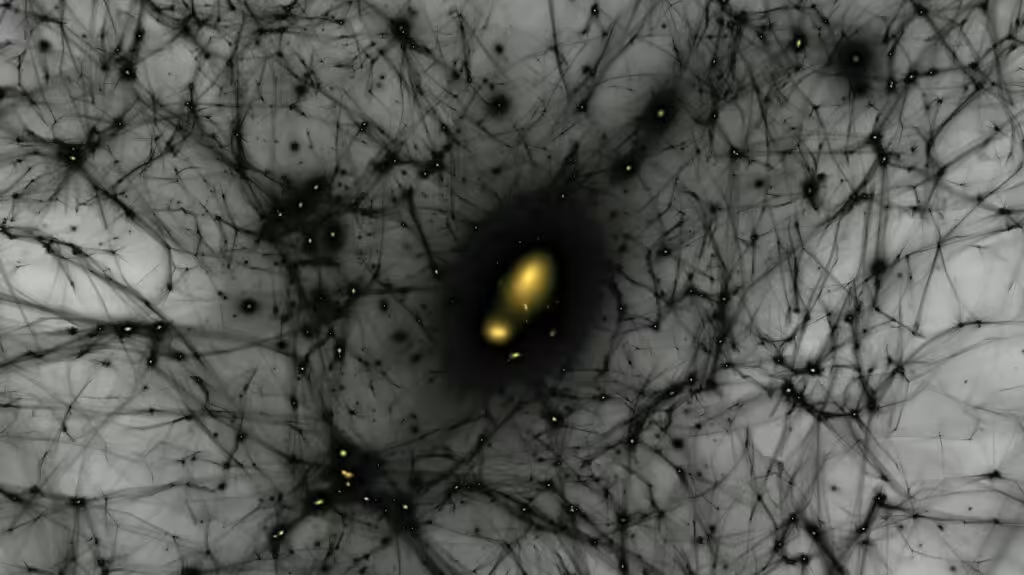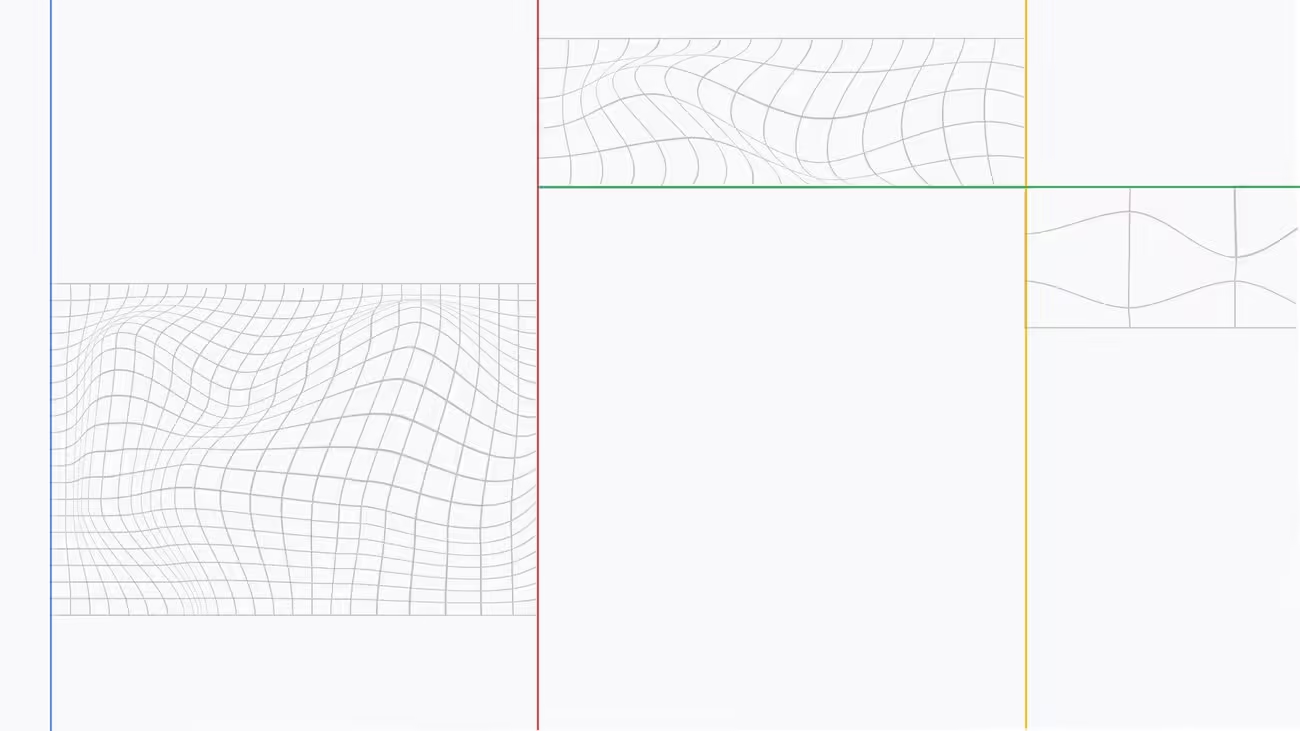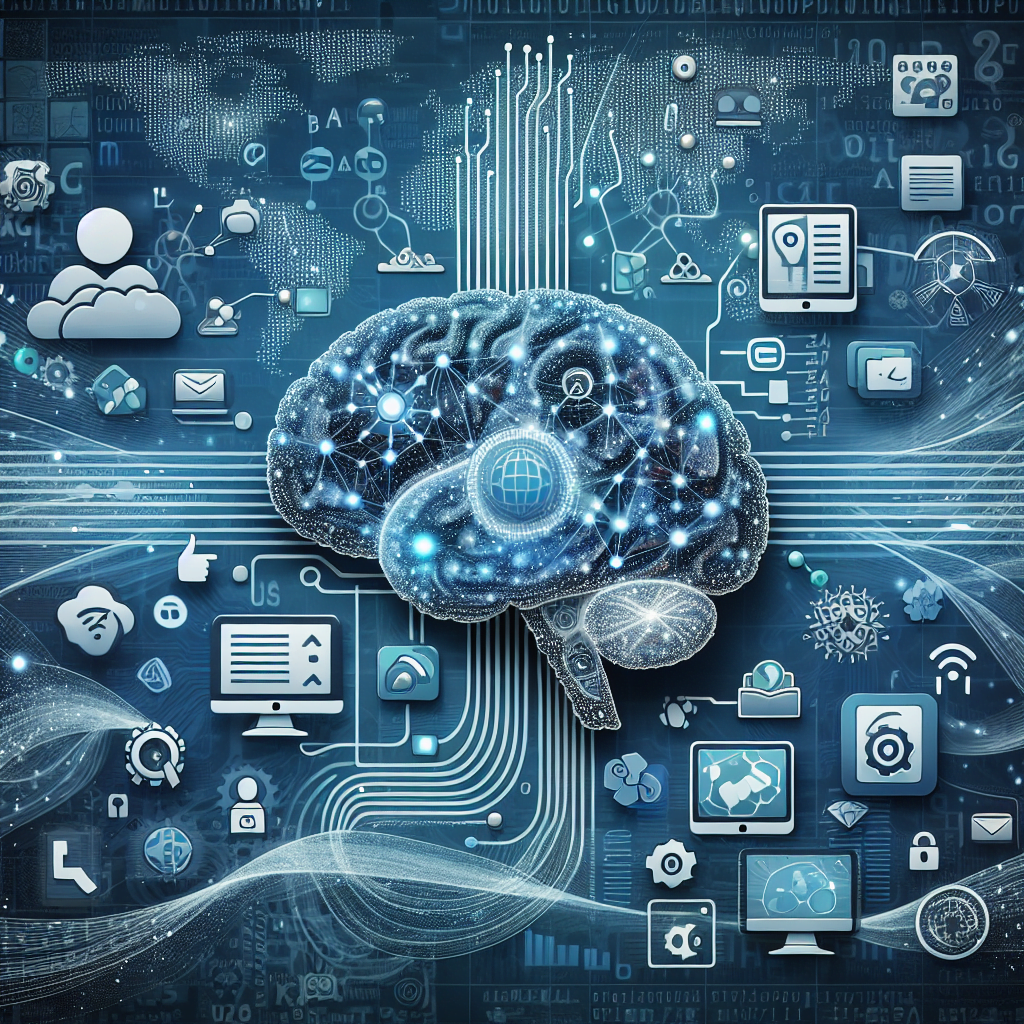Image from a simulation showing the formation of dark matter structures from the early universe to the present day. Gravity causes dark matter to clump into dense halos, indicated by bright spots, where galaxies form. In this simulation, a halo similar to the one hosting the Milky Way forms, and a smaller halo resembling the Large Magellanic Cloud falls towards it. Researchers from SLAC and Stanford, in collaboration with the Dark Energy Survey, use simulations like these to better understand the link between dark matter and galaxy formation. Credit: Ralf Kaehler/Ethan Nadler/SLAC National Accelerator Laboratory.
By Nik Papageorgiou
Dark matter is the invisible force that holds the universe together—or so we believe. It makes up about 85% of all matter and roughly 27% of the universe’s content. However, since we can’t see it directly, we study its gravitational effects on galaxies and other cosmic structures. Despite decades of research, the true nature of dark matter remains one of the most elusive scientific questions.
One leading theory suggests that dark matter could be a type of particle that interacts very weakly with anything else, except through gravity. However, some scientists propose that these particles might occasionally interact with each other, a phenomenon known as self-interaction. Detecting such interactions would provide crucial clues about the properties of dark matter.
Distinguishing the subtle signs of dark matter self-interactions from other cosmic effects, such as those caused by active galactic nuclei (AGN)—supermassive black holes at the centers of galaxies—has been a major challenge. AGN feedback can move matter in ways similar to the effects of dark matter, making it difficult to tell the two apart.
Astronomer David Harvey at EPFL’s Laboratory of Astrophysics has developed a deep learning algorithm to help untangle these complex signals. Their machine learning-based method is designed to differentiate the effects of dark matter self-interactions from AGN feedback by analyzing images of galaxy clusters—vast collections of galaxies bound together by gravity. This work promises to improve the accuracy of dark matter studies.
Harvey trained a convolutional neural network (CNN) with images from the BAHAMAS-SIDM Project, which models galaxy clusters under different dark matter and AGN feedback scenarios. By feeding the CNN thousands of simulated images of galaxy clusters, it learned to distinguish between signals caused by dark matter self-interactions and those caused by AGN feedback.
Among the various CNN architectures tested, the most complex—dubbed « Inception »—also proved to be the most accurate. The model was trained on two main dark matter scenarios with different levels of self-interaction and validated on additional models, including a more complex, velocity-dependent dark matter model.
Inception achieved an impressive 80% accuracy under ideal conditions, effectively identifying whether galaxy clusters were influenced by self-interacting dark matter or AGN feedback. It maintained high performance even when researchers introduced realistic observational noise that mimics the type of data expected from future telescopes like Euclid.
This means that Inception—and this approach more generally—could prove incredibly useful for analyzing the massive amounts of data we collect from space. It could become a promising tool for future dark matter research.
Read the full research
A deep learning algorithm to disentangle self-interacting dark matter models and AGN feedback models, David Harvey, 2024.

EPFL



